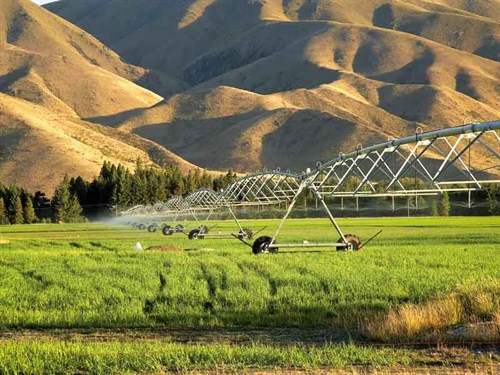Farm advice: Monitoring how water is used for irrigation
The Office of the Auditor-General's recent report titled ‘Monitoring how water is used for irrigation' looks at how NZ manages and uses water
There is an old saying that goes ‘if you can’t measure it, you can’t manage it’. The government took this on board in 2010 when it introduced regulations requiring users of large quantities of freshwater to measure, using meters, just how much they’re using.

The Office of the Auditor-General has just published a report titled ‘Monitoring how water is used for irrigation’. So what’s our interest in irrigation?
We adopt a theme each year that helps us shine a light on areas of importance to New Zealanders. Our current theme is water management. It almost goes without saying that New Zealanders have a special relationship with water. Its importance to our way of life and your livelihood cannot be overstated.
Irrigation made the cut because the numbers associated with it are big. Up to five billion litres of water each year can be taken to irrigate millions of hectares of land. Other compelling factors include the level of government investment and negative perceptions about its environmental effects.
We focused on how well the meter installation process was managed, the quality of water-use data collected, how this data is used, and whether this has led to positive changes in the way water is used. We focused on six councils that between them monitor about 90% of freshwater used for irrigation.
Report findings
Overall, the councils implemented the regulations well. Water meters have been installed for almost all of the largest water takes. However, more work is needed to install meters for lower-use permit holders – those who use 5–10 litres per second.
Councils are starting to use the information collected to track how much water is being used and to work with permit holders to find ways to use freshwater more efficiently. However, the quality of the data isn’t always as good as it needs to be.
Some water-use data is collected and submitted manually. Misread meters and handwritten meter readings often lead to errors in this data, which undermines its usefulness.
Another concern is the lack of frequency of some data collection. The regulations only require data to be submitted to councils at least once a year, although some councils have opted to require it more frequently.
Poor, infrequent data paints an inaccurate picture and could lead to ill-informed decisions. For the data to be useful, it needs to be collected and shared with councils automatically and regularly.
We were impressed by how Marlborough District Council anticipated and addressed these issues. In 2014, the Council phased out manual recordings of water-use data and required permit holders to install data loggers – automated recording systems that let the Council collect reliable, regular, and comprehensive data.
We think there’s something to be said for this approach. We’ve recommended that the Ministry for the Environment review those regulations that allow for manual data collection and annual data provision and work to ensure that data is regularly submitted using automated processes.
When it comes to using new technology to drive efficiency, farmers are often at the forefront. We liked what we saw in Canterbury where many farmers have invested in new technology to improve data quality.
Switching to automated data collection costs money, so it’s vital this data is used to your benefit. We were told that many permit holders now receive alerts when they come close to exceeding their allocation, which helps permit holders and enforcers alike.
Many councils are making water-use information and analysis available to permit holders online. This can be used by permit holders to identify where water – and potentially money – can be saved.
Water metering is one part of the technology-based change in agriculture. Water-use data can be used alongside other data, such as climate and soil quality information, to give a more complete picture of your use of resources.
We’ve also noted that councils could make more information about how water is used for irrigation publicly available. This would give others – including iwi, environmental groups, central government, and the general public – a deeper understanding of permit holders’ water usage, improve the conversations about water use in your communities, and help identify better ways to manage water use.
We’ve recommended that the Ministry for the Environment evaluate the benefits of metering to understand how it’s changed the way permit holders have used their allocations, and that interested groups work together to use water-use data to enable more effective and efficient use of freshwater.
This is the first report in our series exploring how we, as a country, manage and use our water. Future reports will look at other issues, including management of freshwater quality and drinking water.
These will be published throughout the year, and I hope they will also be of interest. You can read our irrigation report and more about our water programme at oag.govt.nz/reports/water.
Keep up to date in the industry by signing up to Farm Trader's free newsletter or liking us on Facebook



.jpg)








